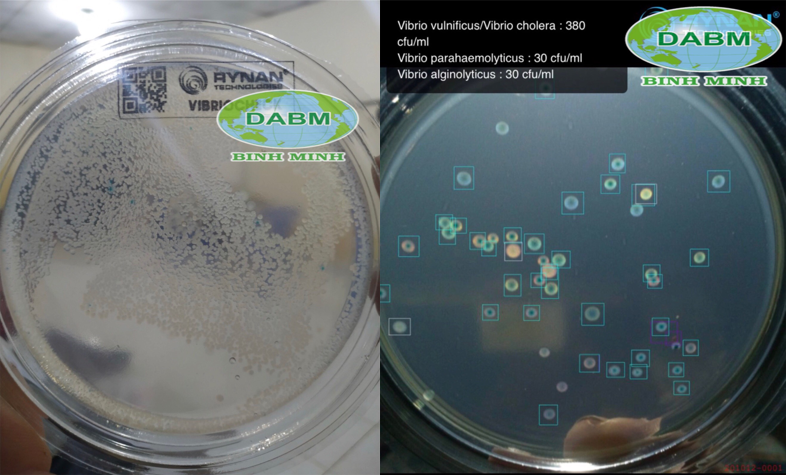From 2012 to 2020, the industrial and high-tech shrimp farming model (pond liner) has grown fast due to the new technology development trend of the times. Problems such as small farming areas, big profits, and high stocking density lead to the use of many chemicals and antibiotics. It adversely affects not only the health of consumers but also the quality of shrimp. In addition, it also impacts the prices and the exports situation of this one. Besides, overusing chemicals and antibiotics in shrimp farming pollutes wastewater and increases disease outbreaks, leading to harmful pathogens that are resistant to antibiotics. Moreover, farming areas and water resources are also shrunk due to pollution.
To overcome these problems and contribute to shrimp farming in a sustainable direction in the future, you may apply an eco-friendly farming method or use microbiological or probiotics for all shrimp farming models.
There are some advantages when culturing shrimp by microbiological
– Limiting environmental pollution and risks caused by disease
– Shrimp grow fast and reach large sizes
– Shrimp have high-valuable, are not infected with antibiotics, and reach an export quality.
– Low cost and high profit
Recommendations when culturing shrimp by microbiological
– Selecting reputable, quality, and disease-free postlarvae hatcheries. Currently, Binh Minh Aquaculture Development Co., Ltd produces disease resistance postlarvae sources.
– The stocking density should be appropriate according to each model
For black tiger shrimp
Extensive farming: < 1 individual / m2
Semi-intensive farming: < 5 individuals / m2
Intensive farming: < 10 individuals / m2
For white leg shrimp
Extensive farming: < 5 individuals / m2
Semi-intensive farming: < 20 individuals / m2
Intensive farming: < 100 individuals / m2
Super intensive farming: < 150 individuals / m3
– The farming model should have a settling pond, pond preparation, and culturing pond.
– Water entering the pond must be settled and filtered (with a net of fewer than 50 micrometers).
– Using probiotics to overwhelm harmful bacteria at least 3 times before stocking
– Checking the density of harmful bacteria (under 100-200 CFU)
– For earthen and extensive ponds, it is necessary to supplement probiotics at least two times in 10-15 days before stocking.
Image of some harmful bacteria
DOMESTICATED SHRIMP POSTLARVAE – THE KEY TO SUCCESS
See more:
- Shrimp market Update: facing new challenges
- Bioremediation For Profitable Vannamei Shrimp Farming
- Ecuador hosts global shrimp buyers for second shrimp summit

 Tiếng Việt
Tiếng Việt
